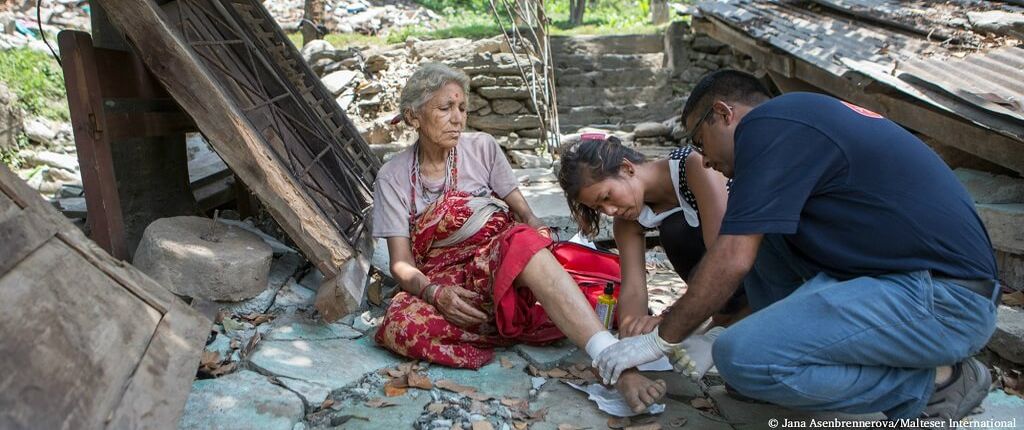
Rebuilding after the earthquakes in Nepal
After the devastating earthquakes on 25th April and 11th May 2015, official figures put the death toll at around 8,700, with 22,000 people injured. The Nepalese government announced that over half a million houses were destroyed and 250,000 homes severely damaged. The UN estimates about 5.6 million people in 14 districts in the country were affected by the earthquakes. Due to extensive damages to important infrastructure and institutions like schools, roads and hospitals, it would take several years for people to return to normal life. In addition to the casualties and physical damage, the earthquake has also had a huge emotional and psychological impact on the surviving population. The country and her people are gradually recovering from the effects of the disaster.
Malteser International's emergency response team was immediately on ground after the disaster to provide medical support to survivors. In the weeks and months that followed, families in the most affected rural areas were provided with necessary food stuff, house items and building materials for temporary shelters, while make-shift hospitals were also erected to provide much needed medical care for the affected villages. Since mid-2016, we have supported reconstruction and rehabilitation measures in Nuwakot, Sindhulpalchowk and Kavrepalanchowk by implementing measures in the sectors of health, water and sanitation, and shelter. These three districts were the most affected during the disaster. In order to prepare the villagers better for future disasters, we have also included capacity building measures in disaster risk reduction.
The districts Sindhulpalchowk, Nuwakot und Kavrepalanchowk were among the most affected regions in the earthquakes of 2015. Many homes were completely or partially destroyed, access to clean drinking water was cut short, and sanitary facilities like latrines were ruined. Most health-care centers are unable to fully operate as a result of the damages. Local institutional structures responsible for disaster risk management are hardly functional or inadequately equipped for the prevention and management of disasters.
Our first goal is to support the reconstruction of 10 villages in the affected districts of Sindhulpalchowk, Kavrepalanchowk and Nuwakot in the following areas: shelter, water and sanitation, and health.
A second goal is to improve the preparedness level of the communities in the event of future disasters.
- Building earthquake-resistant houses and training bricklayers in anti-seismic construction techniques
- Building latrines to improve health conditions
- Trainings and activities to promote good hygiene
- Repair and restoration of water reservoirs and water pipes to provide drinking water
- Construction of basic health-care center with necessary medical equipment and medicines
- Training of health care personnel and community volunteers in the recognition and care of people with mental health issues, sensitization campaigns in mental health at community level and psycho-social support for people suffering mental illness
- Training of teachers in the recognition of mental illness in school children, and awareness-raising for dealing with mental illness in schools
- Strengthening local capacities responsible for disaster risk management through trainings and provision of equipment
Country info
Capital: Kathmandu
Area: 147,181 km²
Population: approx. 28.5 million
Project data
Project duration: August 2016 - December 2018
Financing: The German Relief Coalition (Aktion Deutschland Hilft - ADH), The State of Baden-Württemberg and private donations
Partners: Rural Self-Reliance Development Centre (RSDC), Indrawatee Community Service Centre (ICSC), Community Development and Environment Conservation Forum (CDECF), KOSHISH
Last Update: April 2017








